ENQUIRY FORM
Cataract Surgery
Cataract is the most common cause of reversible blindness. We provide phacoemulsification and lens implantation surgery with a wide range of artificial intraocular lenses such as monofocal, multifocal, toric and toric multifocal lens implants.
We also treat childhood cataracts, and implant artificial lenses as a primary or secondary procedure if required for congenital and juvenile cataracts. Read more about childhood cataract here.
What is a cataract?
A cataract is the clouding of the natural lens inside you eye. Most instances, this is due to age but in other instances it can occur earlier due to previous eye trauma, medication usage or co-existing eye problems like diabetes and high myopia.
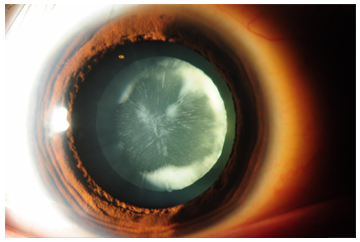
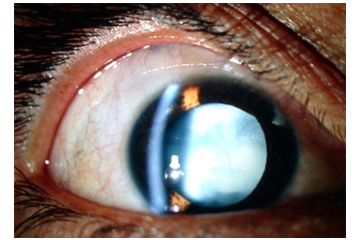
What visual issues can occur if I have a cataract?
A cataract could be the reason sharp images have now become blurred, bright colours dull, or seeing at night becomes more difficult. It may also be why glasses which used to help you see clearly for distance, or reading glasses that used to help you with near tasks, no longer seem to work well.
Vision with cataracts have been described as seeing through a "cloudy film". However, dry eyes can sometimes cause similar symptoms, especially if the blurred vision occurs intermittently.
How is cataract treated?
Cataract surgery is required if it affects vision and the patient's day to day functional activities significantly. This is an outpatient, Medisave (for locals) and insurance claimable procedure which involves removal of the cloudy lens and replacement with an artificial intraocular lens in its place to restore vision. Surgery is performed under local anaesthesia, with minimal discomfort and usually takes under 30 minutes. No overnight hospitalisation stay is required.
Cataract surgery is one of the safest and most successful procedures performed today. Significant medical advances have been made in the treatment of cataracts, and in the field of intraocular artificial lens technology. There are now many artificial lens options, each with its specific benefits, and a detailed consultation with emphasis placed on visual needs, hobbies, daily activities and occupation can help in tailoring the visual outcomes specifically to these needs.
What are the different types of cataract surgery performed?
(A) Phacoemulsification
This is the most common, widely practised method of "stitchless" cataract surgery. In phacoemulsification, an ultrasonic probe is inserted into the eye through a tiny incision measuring between 1.8 to 2.2mm. The ultrasonic energy 'emulsifies" the cataract, and the broken-up pieces are aspirated away. The outer covering of the cataract (i.e. the capsule) is left intact. The intraocular lens is then inserted securely within the capsule. The tiny incision translates into faster wound recovery and lesser discomfort post-operatively.
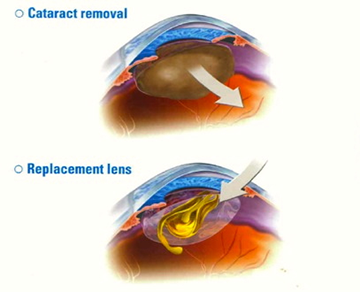
(B) Femtosecond laser-assisted cataract surgery
Femtosecond laser-assisted cataract surgery is the latest method available. A "bladeless" cataract surgery technique, it uses a laser beam to create a precise incision to enter the eye as well to facilitate subsequent removal of cataract. Femtosecond lasers deliver high precision and accuracy, to deliver better refractive cataract surgery outcomes. Please click here for more information.
(C) Extracapsular cataract extraction
This method is very rarely employed but may be required when the cataract is very dense or if the surgery may potentially end up being very complex. Stitches are required in this method.
Can and should a cataract be removed at the earlier stages?
Previously, most patients would present when their cataracts were in the moderate to advanced stage. As a result, if undergoing phacoemulsification, higher amounts of ultrasound energy are required to remove the cataract, which can potentially be harmful to the eye.
In recent years, more patients and surgeons are veering towards removal at moderate, even early stages. As a guide, if your quality of vision has been adversely affected such that your day to day activities like reading, computer work, driving can no longer be done at ease, you can consider undergoing cataract surgery.
There are an array of lenses available, to ensure that you could even be spectacle free for distance AND near vision after cataract surgery.
I have heard that after standard cataract surgery, glasses may still have to be worn. Can I enjoy quality vision without the hassle of corrective eyewear?
Traditionally, the artificial intraocular lenses had a single zone of clear focus set for excellent distance vision, but necessitated the use of reading glasses for near tasks. These lenses are called monofocal lenses.
If you travel, do sports, enjoy the outdoors and would like to enjoy quality distance vision without the aid of glasses or contact lenses, you may be able to minimize the use of eye glasses for distance and near vision without the need for additional surgical procedures. With the advent of new technology, premium intraocular lenses now have several zones of clear focus, allowing simultaneous correction of both distance and near vision. These are called multifocal lenses.
I have presbyopia ("lao hua") and have been wearing reading glasses for a long time. Can I finally be rid of my reading glasses after I undergo cataract surgery?
Many patients who undergo cataract surgery are of the presbyopic age group. Presbyopia (commonly called "lao hua") is an age-related condition where the eye loses its ability to focus at near. People with presbyopia often require reading glasses for near and computer work, or find themselves holding a menu or book progressively farther away to read. If you have cataracts with presbyopia, a multifocal lens can now correct both conditions, and allow you to enjoy good distance and near vision without the need for eye glasses.
Examples of some multifocal intraocular artificial lens implants used:
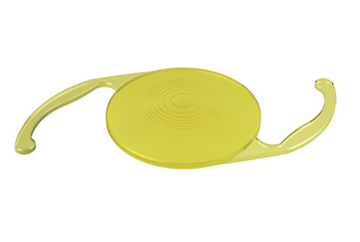
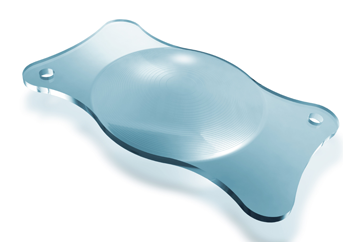
What are my options if I have cataract and astigmatism?
If you have pre-existing astigmatism and are now planning to have surgery to remove a cataract, you have an additional option – an implantable lens that makes it possible to treat the cataract and correct the corneal astigmatism at the same time.
Traditionally, the surgeon implants a monofocal artificial lens implant without astigmatic correction. However if you have astigmatism, you may still experience blurred and distorted vision post-operatively after a monofocal artificial lens implant. This type of lens cannot correct for pre-existing corneal astigmatism. To achieve quality distance vision, you may still require eye glasses, contact lenses or occasionally further laser refractive surgery to correct the residual astigmatism.
If quality distance vision is important to you, a toric (i.e. corrects for astigmatism) artificial lens implant can achieve a good outcome and reduce the need for eye glasses after surgery.
Example of a toric intraocular artificial lens implant:
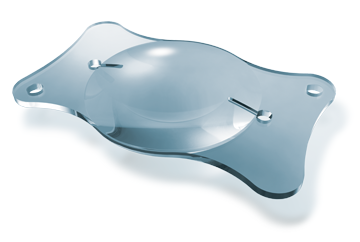
There are so many artificial intraocular lens options. Which is best suited for me?
In choosing your cataract replacement lens, we will take into account many aspects of your eye health. You will also be asked to consider your lifestyle. How much reading or computer work do you do? What are your hobbies? Do you often drive at night? What is your occupation? Finally, based on the above requirements, we will recommend an intraocular lens best suited for you.
What can I expect following cataract surgery?
Eye drops are prescribed to suppress inflammation and prevent infection. An eye patch may have to be worn immediately after the surgery and overnight for a few nights. Everyone heals differently but most patients see well enough to return to most of their routine activities within a few days after surgery.
How soon can I return to work after my surgery?
Most patients recover well enough to return to most of their activities within a few days. Some start returning to work as soon as 1-2 weeks after surgery. However, the eye power takes approximately a month to stabilize so for complete recovery to occur, it takes approximately 4 weeks.

